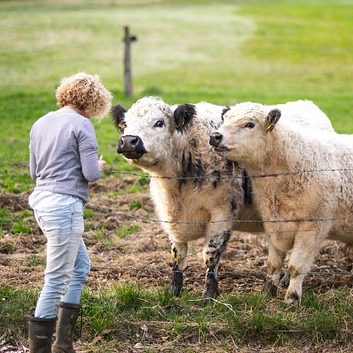Parents introduce their children to all types of new hobbies and skills. There are plenty of opportunities to open kids’ eyes to the world around them. One of the more useful lessons parents can teach their children is how to cook.
Knowing how to cook is a vital skill that can help children become more independent and ensure they know how to survive later in life on their own. So many young adults go off to college without the ability to do more than power up a microwave or boil noodles. Ordering takeout all the time is expensive, and frozen dinners often lack the nutrition of homemade dishes. Learning how to cook a variety of foods at an early age can lay the foundation for a lifetime of healthy eating and fun in the kitchen.
Parents can encourage children who show early inclinations in the kitchen, but also help reluctant learners to develop some basic cooking skills. Here are some ways to make cooking something kids can look forward to.
• Involve children in meal planning. Get input from your children about what they might like to see on the menu. While there may be some items that are expected, including comfort foods like mac-and-cheese, parents may be surprised at how mature their children’s palates can be. Maybe they’ve heard about a dish on television or learned about a specific ethnic cuisine at school and want to give it a try.
• Watch cooking shows together. How-to cooking shows and competitions appear on both cable and network television. Kids may enjoy watching Gordon Ramsay mentor young chefs; Robert Irvine help to renovate a failing restaurant; or Ann Burrell assist self-proclaimed “worst chefs” shed those monikers. Cooking shows can introduce kids to food-related terminology and get them heated up about cooking their own meals.
• Ask for help in the kitchen. Tailor cooking activities to youngsters’ ages. Little ones can begin by adding and stirring ingredients. As they get older, children can segue into chopping or even mixing foods on the stove. Many kids like being taste testers and offering advice on whether a food needs more spices. By middle school, many kids have the wherewithal to plan meals themselves and cook them from start to finish.
• Be adventurous. Introduce kids to various flavors by not only cooking various dishes at home, but by dining out at different restaurants. This can encourage kids to appreciate different cultures and cuisines.
Learning to cook is a vital skill. Lessons can begin early in childhood and become more extensive as children age.











 Action Cam 180, a 180-degree rotatable camera that takes photos and videos with fun features like slow and fast-motion. It comes with accessories needed to mount it to a bike, skateboard and more while taking action shots. The all-weather, water-resistant case allows for use up to six feet underwater, perfect for swimming and splashing. For even more fun, kids can play one of three included games.
Action Cam 180, a 180-degree rotatable camera that takes photos and videos with fun features like slow and fast-motion. It comes with accessories needed to mount it to a bike, skateboard and more while taking action shots. The all-weather, water-resistant case allows for use up to six feet underwater, perfect for swimming and splashing. For even more fun, kids can play one of three included games. parents’ smartphones, KidiBuzz lets children message over Wi-Fi to a parent-approved contact list. They can also push the talk button and send quick voice messages. Through the kid-safe web browser, users can visit popular pre-approved websites, and can also download Android apps. It’s also a multimedia player for listening to music and watching videos. Kids can explore silly stamps, frames and photo effects and use them to capture pictures and selfies or make their own videos with the 180-degree rotating camera. The device includes more than 40 learning games and apps and its bumper and shatter-safe screen means kids can take it virtually anywhere.
parents’ smartphones, KidiBuzz lets children message over Wi-Fi to a parent-approved contact list. They can also push the talk button and send quick voice messages. Through the kid-safe web browser, users can visit popular pre-approved websites, and can also download Android apps. It’s also a multimedia player for listening to music and watching videos. Kids can explore silly stamps, frames and photo effects and use them to capture pictures and selfies or make their own videos with the 180-degree rotating camera. The device includes more than 40 learning games and apps and its bumper and shatter-safe screen means kids can take it virtually anywhere.





